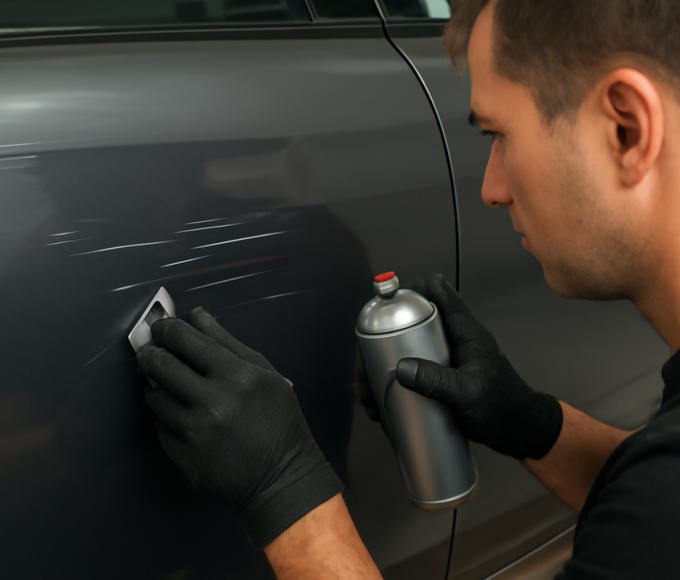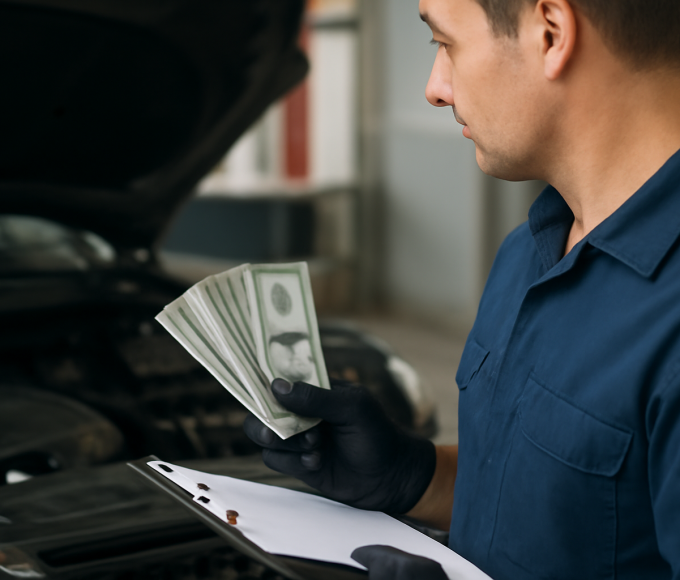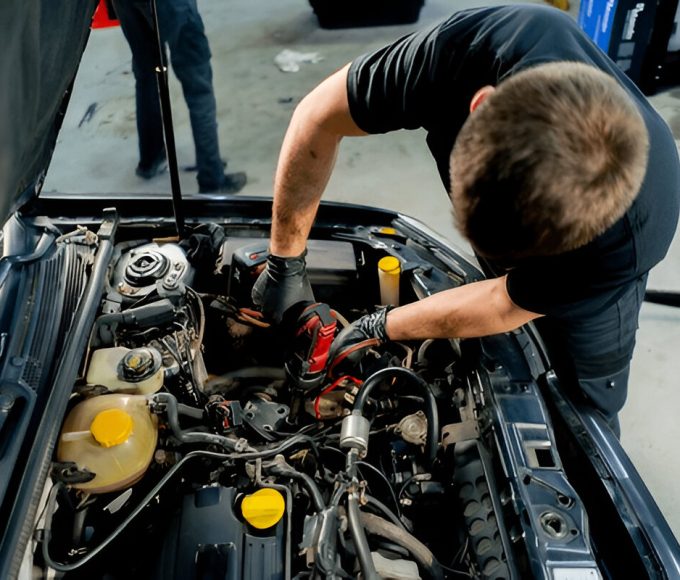If you’ve ever yanked a hot seatbelt across your lap, you already know summertime driving can feel like climbing into an oven. The blistering blast that spills out of a parked vehicle is not only uncomfortable; in extreme cases, it is dangerous for children, pets, and even your electronics. Because of that, drivers everywhere ask: Does window tint really keep your car cooler? The Truth! —and they want more than marketing promises.
You’ll discover how window films intercept the sun’s heat, why some products outperform others, and which habits amplify the cooling effect. Along the way, you’ll see common myths shattered, legal pitfalls explained, and a real-world case study that proves the numbers. By the end, you’ll have every tool you need to ride comfortably, no matter how high the mercury rises.
Heat Build-Up: Why Cars Become Saunas
Let’s look at why cabin temperatures soar so quickly. Sunlight includes three primary components: ultraviolet, visible, and infrared energy. UV waves fade dashboards, IR waves create heat, and visible light adds glare. When your car sits still, the glass acts like a greenhouse. Light pours through, strikes seats and panels, turns to long-wave heat, and bounces back. Because long-wave radiation cannot escape as easily, heat builds minute by minute. Consequently, cabin temps often climb 40°F faster than the outdoor air.
The Real Deal on Window Tinting
Window tint is a wafer-thin laminate that bonds to the interior surface of factory glass. Depending on the film’s chemistry—dyed, metalized, carbon, or ceramic—it either absorbs or reflects solar radiation before that energy turns into trapped heat. Although every film offers some relief, ceramic technology leads the pack, rejecting up to 95 % infrared while allowing plenty of visible light. Therefore, you enjoy cooler rides without turning your windows into pitch-black portals.
Because of that performance, curious motorists again ask, does window tint really keep your car cooler? —and the answer begins with understanding these layers of protection.
The Science of Heat Rejection
When photons strike a tinted window, several things happen at once. First, metallic and ceramic particles scatter or reflect a chunk of the infrared spectrum. Next, special UV inhibitors soak up nearly all ultraviolet rays. Finally, harmless visible light streams through, so you can drive safely. Altogether, Total Solar Energy Rejection (TSER) is the metric installer’s quote. A film rated at 60 percent TSER blocks three-fifths of incoming heat; a 75 percent film is even stronger. Thus, numbers—not guesswork—prove performance.
So, does window tint really keep your car cooler?The truth is grounded in these measurable TSER ratings rather than anecdotal claims.
Types of Tint and Their Strengths
Because every driver’s needs differ, film manufacturers create distinct product families:
- Dyed film – budget-friendly, mild heat reduction, deep color
- Metalized film – strong reflectivity, possible signal interference
- Carbon film – solid IR rejection, matte aesthetic, durable
- Ceramic film – highest IR rejection, crystal-clear view, premium price
Even a light ceramic film can outperform a dark-dyed alternative, which is why shade alone does not predict heat protection. Consequently, shoppers who focus only on darkness may be disappointed later.
How Much Cooler? Real Numbers
Independent testing by the Skin Cancer Foundation showed that after one hour in direct sun, the steering wheel of an untinted sedan reached 145°F. In contrast, the car fitted with 70 percent ceramic film peaked at 118°F—a 27-degree drop. Likewise, cabin temperatures fell from 131 °F to 105 °F. Because air-conditioning workloads decrease as starting temps drop, fuel consumption fell by roughly five percent on the identical route.
Therefore, when skeptics still wonder, does window tint really keep your car cooler?The answer becomes obvious as soon as a thermometer joins the conversation.
Seven Extra Benefits Nobody Mentions
- Skin health – 99 percent UV blocking equals sunscreen that never wears off.
- Interior longevity – seats, stitching, and plastics resist cracking.
- Glare reduction – eyestrain drops and reaction time improve.
- Shatter retention – film holds glass fragments after an impact.
- Privacy – valuables stay out of sight, deterring theft.
- Energy savings – AC cycles are shorter, saving fuel or battery range.
- Resale value – a cooler, cleaner interior fetches a higher price.
Altogether, the perks stretch beyond simple temperature comfort and reinforce our headline inquiry: Does Window Tint Really Keep Your Car Cooler? The Truth!
Myths That Refuse to Die
- “Darker means cooler.”
Modern clear ceramic films outperform cheap dark dye.
- “Tint is illegal.”
Each state sets limits, and the compliant film carries certification.
- “Night driving becomes dangerous.”
Quality films maintain high visible-light transmission.
- “DIY kits save money.”
Peel-and-stick wrinkles cost more to fix than pro installation.
After separating fact from fiction, you can evaluate the topic without noise from outdated assumptions.
Legal Checkpoints You Must Clear
Because tint laws vary widely, always verify two figures before purchase:
- VLT (Visible Light Transmission) – the percentage of light allowed through
- Reflectivity – the amount of light bounced back toward onlookers
For instance, Florida permits 28 percent VLT on front windows, whereas New York requires 70 percent. Exceed limits, and you invite fix-it tickets or failed safety inspections. Consequently, ask installers for a compliance certificate.
Safety First
Beyond cooler seats, tint can improve on-road safety. By reducing windshield glare, drivers preserve night vision. Moreover, interior shatter protection keeps projectiles from striking occupants during collisions. Therefore, legal, light-transmitting film often raises overall safety rather than hindering it.
Choosing the Perfect Film
Because the market is crowded, use this five-step checklist:
- List your priorities – heat, privacy, style, price
- Study TSER and UV numbers – higher is better
- Compare warranties – reputable brands offer lifetime coverage
- Inspect sample boards indoors and outdoors to check clarity
- Book a certified installer – experience prevents bubbles and edge lift
Follow this route, and inevitably, you’ll answer friends who ask, does window tint really keep your car cooler?with confident first-hand testimony.
Professional vs DIY: The Hidden Costs
At first glance, do-it-yourself rolls seem cheaper. However, trimming film around complex curves demands surgical precision. One small crease becomes a distracting eye-level blur you must face every mile. Worse, squeegee mistakes trap dust that casts ugly stars against headlights at night. Professionals work in filtered booths, cut patterns on plotters, and back their craft with warranties. Consequently, the long-term cost of expert labor often equals—or even beats—the DIY route once rework is considered.
Maintenance for Decade-Long Performance
Because proper care prolongs film life, adopt these habits:
- Wait three days before lowering the windows
- Wash with pH-balanced soap and a soft microfiber cloth
- Avoid ammonia glass cleaners that strip UV inhibitors
- Inspect edges twice a year; reseal any spots before moisture seeps under
These steps keep clarity sharp and rejection rates high, ensuring that does window tint really keep your car cooler? The truth! Remains valid for many summers.
Complementary Cooling Tricks
Even the best tint needs an assist.
Therefore:
- Park under trees or carports whenever feasible
- Deploy a quick-fold windshield shade for direct noon angles
- Crack the opposite windows one inch to create a cross-breeze while parked
- Choose light-colored seat covers to reflect instead of absorb sunshine
Combined, these habits can shave another 8–10 °F off cabin temperatures.
Economic and Environmental Upside
Because air conditioning guzzles fuel, less usage saves money and cuts carbon emissions. Researchers at the National Renewable Energy Laboratory found that reducing AC load by 25 percent can improve gas mileage by up to one mpg in compact cars. Electric-vehicle range benefits even more because cabin cooling is a major drain on batteries. Therefore, efficient tint helps wallets and the planet simultaneously.
Case Study: Phoenix Fleet Upgrade
To illustrate, consider a delivery company in Phoenix, Arizona, where summer pavement often exceeds 150 °F. Management wrapped thirty vans in 75 percent ceramic film. After installation, drivers reported starting-cabin temps that averaged 22 °F lower. Moreover, dispatch logged a seven-percent drop in idling time because vans cooled quicker. Over a season, the firm saved 1,800 gallons of fuel, worth more than the entire tint investment.
Real outcomes like these answer doubters who wonder, does window tint really keep your car cooler?with a resounding yes backed by dollars saved.
Future Tech: Photochromic and Nano Films
Because materials science never stops, next-gen tints are entering the market. Photochromic films gradually darken when sunlight intensifies, giving drivers adaptive comfort without manual shades. Meanwhile, nano-ceramic particles refine clarity so sharply that even medical-grade imaging vehicles use them. Heat rejection will climb higher as these options mature while visibility remains crystal clear.
Cost Versus Value: Breaking Down the Numbers
Although premium films carry higher upfront prices, the payback period is shorter than most expect. A midsize sedan fitted with quality ceramic tint might cost $400. However, if the film extends seat life by two years, saves a gallon of fuel weekly, and prevents one smartphone from overheating, it effectively pays for itself during the first summer. Additionally, a crack-free interior can nudge resale value upward by several hundred dollars when you trade or sell the vehicle. Therefore, tint is less of an expense than a wise investment.
Frequently Asked Questions
Does tint affect GPS or mobile signals?
Only metallic films pose a risk. Carbon and ceramic options allow signals to pass unimpeded.
Can factory-tinted privacy glass replace film?
Factory glass usually colors the window but blocks little infrared. Adding film still improves heat rejection.
Will my insurance rate change?
Most insurers treat tint as a cosmetic upgrade, so premiums stay the same. Always notify them for full coverage.
How long does a professional installation take?
Sedans usually take two to three hours, while SUVs can take half a day. Drying time is separate.
Is removal difficult if laws change?
A heat gun and adhesive remover strip film cleanly. Professionals can finish in about an hour.
Quick Installation Checklist
Before you drop your car off at the shop, walk through this quick list:
- Take clear “before” photos of each window
- Confirm film series and shade on the invoice
- Ask about curing time so you know when windows can roll down
- Request the warranty card and keep it with your vehicle paperwork
- Inspect the glass in sunlight before paying
When friends later ask, does window tint really keep your car cooler?You’ll have both receipts and real-world experience to prove it.
Final Verdict
Pulling together physics, statistics, and road-tested anecdotes leads to one undeniable conclusion: window tint works. When installed by pros who respect local law, it slashes cabin surface temperatures, shields skin, preserves interiors, and trims fuel costs with zero downsides.
Therefore, book a reputable installer today if you crave cooler commutes and longer-lasting upholstery. The next time someone approaches your parked car and asks, does window tint really keep your car cooler?You can open the door, invite them to touch the seat, and watch their eyebrows rise.
Chill Rides Ahead
Summer drives no longer need to feel like sauna sessions. You transform your vehicle into a comfortable, safer, and more efficient space by combining premium window tint, smart parking habits, and routine film care. So join millions of satisfied drivers and experience the relief yourself. Furthermore, reduced glare lets you enjoy scenic routes without squinting, while a quieter cabin promotes stress-free drives. After all, does window tint really keep your car cooler? The truth! has never been clearer—or cooler—than right now. Your next summer journey could start cooler, safer, and noticeably more enjoyable—just a single film away.

















Leave a comment